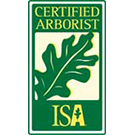
Effective soil management is essential for healthy trees. By optimizing soil conditions, you can provide vital nutrients, water, and support that trees need to thrive. This article will guide you through key soil management practices, including assessing soil conditions, using mulch, preventing diseases, and knowing when to seek professional help.
The Role of Healthy Soil in Tree Growth
Healthy soil is the foundation of a thriving ecosystem. Trees rely on the ground for critical nutrients, hydration, and anchoring. Without healthy soil, even resilient trees may struggle to thrive. Soil retains moisture that trees rely on during dry periods—especially crucial in drought-prone regions like California.
Healthy soil is rich in beneficial organisms essential for plant health. The beneficial microbes present within the earth act as an organic shield against damaging pests and illnesses that could affect trees. The levels of pH within the soil also considerably determine how accessible nutrients are, which subsequently influences both tree development and productivity.
Preserving soil organic matter stands out as another essential aspect. It bolsters soil structure while gradually dispensing necessary nourishment—ensuring trees have consistent access to their required sustenance for optimal growth.
Image Tree Service provides expert soil management strategies tailored to California’s unique climate. Their methods align with global sustainability goals, focusing on soil conservation to support food production and protect natural habitats.
1. Why Soil Quality Matters for Tree Health
The substance beneath our feet is more than mere earth. It’s a dynamic, living system essential for the nourishment, hydration, and structural support of trees. The arrangement of various soil particles forms the soil structure which plays a crucial role in maintaining moisture retention and anchoring plant roots effectively. A healthy soil teems with organic material and a plethora of microscopic organisms that enhance soil surface and its fertility and are vital for robust plant development, underscoring the significance of both soil biology and overall quality.
Across California’s diverse landscape, there are different types of soils, touching every spot in the soil pyramid – each possessing distinct properties influencing arboreal growth. While sandy soils may allow rapid water drainage leading to nutrient scarcity, clayey soils can hold water excessively yet risk becoming dense enough to hinder root expansion. Loam represents an optimal mix featuring sand, silt and clay, which affords sufficient drainage paired with adequate nutrient access conducive to tree health.
Tree vitality might be compromised due to prevalent issues related to such as:
- Compression that restricts oxygen flow along with moisture penetration causing root distress
- Inadequate draining potential resulting in detrimental root decay
- Loss or shortage of necessary nutrients manifesting through limited growth progression alongside foliage discoloration
By recognizing these challenges, you have the opportunity to proactively preserve vibrant healthy soils thereby enabling your trees not just survival but flourishing success.
2. Assessing Soil Conditions for Optimal Tree Growth
Frequent evaluation of soil conditions is critical for maintaining ideal growth conditions for trees. Analyzing the make-up of your soil, which encompasses testing pH levels, examining nutrient density, and measuring the soil moisture and content, offers crucial information about the state of your soil health. Utilize readily available soil testing kits to ascertain whether enhancements are needed to increase the fertility and physical composition of your soil.
Soil aeration stands as another vital aspect in this regard. Tree roots can be severely affected by compacted soils due to limited availability of oxygen and water. Thus, aerating your ground can alleviate such compaction issues. This process permits roots greater ease in breathing and enhances their capacity for nutrient uptake.
Be alert to signs that suggest declining soil wellness—leaf discoloration towards yellow tones, inhibited tree development or root decay symptoms may emerge when essential soil nutrients are scarce or if there’s an underlying problem with the structure of the soul itself. Tackling these matters without delay paves way for building a nurturing habitat where trees can thrive robustly.
3. Proven Soil Management Techniques for Healthier Trees
Managing soil properly is essential for enhancing the health of trees, and mulching stands out as a particularly effective strategy. By preserving moisture within the soil, regulating its temperature, minimizing soil disturbance and hindering weed growth, mulching establishes an environment that promotes robust tree development.
When applying mulch, it’s important to use the appropriate quantity and apply it correctly around trees. An adequate layer of organic material like wood chips or compost should be evenly spread around a tree’s base while avoiding direct contact with its trunk to prevent potential rot from excess moisture accumulation. Avoiding excessive piling or overly thin distribution of mulch is vital since these are common mistakes that can diminish its protective properties.
Adopting such meticulous practices in your approach to managing soil not only enhances the condition of the soil but also contributes substantially to maintaining healthy trees over time.
4. Preventing Soil-Related Tree Diseases
Tree diseases related to soil conditions can significantly affect your trees’ health and lifespan. In California, root rot and various other illnesses are often caused by an assortment of fungi and bacteria found in the soil. To prevent these problems, proper management of the soil is crucial.
Enhancing soil health can be effectively achieved by introducing beneficial microbes and mycorrhizal fungi into the environment. These organisms develop mutually advantageous relationships with tree roots that enhance nutrient absorption while offering protection against harmful pathogens.
By reducing compaction, you can help maintain a healthy soil. Soil injecting nutrients and microbes into the soil and/or using mechanical aeration with an AirSpade are techniques for greatly improving the state of your soil.
5. Professional Tree and Soil Care: When to Call the Experts
Even with diligent care, there are instances where you may require expert assistance to keep your trees and soil in optimal condition. Symptoms that point towards the necessity for a professional evaluation of your soil and tree health include consistent lack of growth, inexplicable changes in leaf coloration, and noticeable issues with the roots.
Expert interventions like enhancing the air flow within the soil through aeration, nurturing tree roots via deep-root fertilization techniques, and applying treatments aimed at thwarting diseases can solve problems that might be too challenging for individuals to handle alone.
Image Tree Service provides bespoke solutions for both soil management and tree maintenance designed specifically around your unique requirements. Leveraging their specialized knowledge ensures that your trees will be endowed with top-notch attention promoting robust health and vigor.
Frequently Asked Questions
How does sustainable arboriculture improve soil fertility?
Sustainable arboriculture improves soil fertility by preventing erosion and compaction, enhancing organic matter, and carefully managing nutrient levels and fertilizer applications for optimal plant growth.
These practices support long-term soil health and their crop productivity.
What is the study of soil management called?
The study of soil management is called soil science, which includes agricultural soil science, focusing on how soil conditions affect food and fiber production. This discipline covers soil formation, classification, and its various properties.
What do you mean by soil management?
Soil management refers to the practices and strategies employed to protect and enhance soil resources, thereby improving soil health and fertility. This includes soil conservation techniques, soil amendments, and reducing soil erosion, for sustainable agricultural practices.
How can I test my soil’s health?
To effectively test your soil’s health, use a soil testing kit that evaluates pH levels, nutrient content, and moisture levels.
This will provide you with essential information to improve your soil’s quality.
What are the signs of poor soil health?
Indicators of deteriorating soil health include leaves turning yellow, inhibited plant growth, and the decay of roots.
It is essential to tackle these problems in order to help ensure that plants flourish.
Protect Your Trees with Expert Soil Care
It’s essential to adopt proactive soil management practices immediately in order to reduce soil erosion and safeguard your trees. Adopting sustainable arboriculture methods for managing soil can enhance the quality of the soil, minimize erosion, and bolster plant development.
Image Tree Service is currently offering complimentary assessments of your soil to ascertain its unique requirements along with those of your trees. Their skilled professionals stand by ready to craft customized strategies aimed at preserving robust soils and flourishing trees.
Get in touch with Image Tree Service now to arrange a no-cost consultation, marking the beginning of your journey towards securing the enduring vitality and aesthetic appeal of your landscape.
Contact Image Tree Service for Healthy Soil
Proper soil management is essential for maintaining healthy trees. By understanding the role of soil, assessing soil conditions, and implementing effective and sustainable soil management techniques, you can support the long-term health and vitality of your trees.
Preventing soil-related diseases and knowing when to call in professional help are also critical components of tree care. Image Tree Service offers expert solutions tailored to your specific needs, helping ensure that your trees remain healthy and robust.
Give your trees the care they deserve! Contact Image Tree Service today for a free soil assessment and expert solutions to keep your landscape lush and thriving for years to come.













